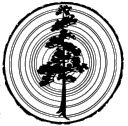
The Laboratory of Tree-Ring ResearchHistory of LTRR |
 |
Originally, the Director of the Laboratory reported directly to the President of the University, and then successively to the Dean of the Graduate College (1958-9), the Provost (1966), the Director of the School of Earth Sciences (1967) the Dean of the College of Earth Sciences (1971-1982), and the Dean of first the Faculty of Science and then the College of Science (1982-present). This administrative history may be seen as a result of the interaction between the multidisciplinary nature of the Laboratory's work and a large modern university's need to impose administrative structures that may not reflect academic reality.
The Laboratory's directors have come from a variety of academic backgrounds:
- Andrew Ellicott Douglass (1937-1958): Astronomer
- Terah Smiley, Acting Director (1958-1960): Geoscientist
- William McGinniess (1960-64): Authority on the world's
deserts
- Bryant Bannister (1964-1982): Archaeologist
- William Robinson (1982-1986): Archaeologist
- Malcolm Hughes (1986-1999): Ecologist turned
paleoclimatologist
In addition to the hundreds of scientific publications of dendrochronology that have emanated from the Laboratory of Tree-Ring Research (click here to see a list of recent publications by subdiscipline), two exceptional publication events have occurred. Both events involved a prominent dendrochronologist of the Laboratory as well as The National Geographic Magazine:
- Andrew Ellicott Douglass. 1929. The secret of the
Southwest solved by talkative tree rings. The National Geographic
Magazine, v. LVI, no. 6 (December).
- Demonstrated that crossdating of tree rings works
- Established absolute dates of construction, occupation, and abandonment of many of the famous ancient pueblos and cliff dwellings of the American Southwest
- Demonstrated that crossdating of tree rings works
- Edmund Schulman. 1958. Bristlecone pine, oldest known
living thing. The National Geographic Magazine, v. CXIII, no. 3
(March).
- Demonstrated the great ages of many bristlecone pines
- Considered the scientific importance of these old trees for learning about environmental change through long time periods
- Demonstrated the great ages of many bristlecone pines
LTRR Home
Mission Statement
History of LTRR
Dendrochronology
Faculty and Staff
Research Teaching Outreach, Extension
Visiting
Scholars
Tree-Ring Talks
Graduate
Studies Personnel Directory
Software Related Links
The University of
Arizona
Laboratory of Tree-Ring Research, The University of Arizona
Tucson, Arizona 85721 USA
Main Office: (520) 621-1608, Fax: (520) 621-8229
Comments to Paul Sheppard: sheppard@ltrr.arizona.edu
Copyright © 1999, Laboratory of Tree-Ring
Research, The University of Arizona
Revised -- September, 1999
URL:
http://tree.ltrr.arizona.edu/history.htm